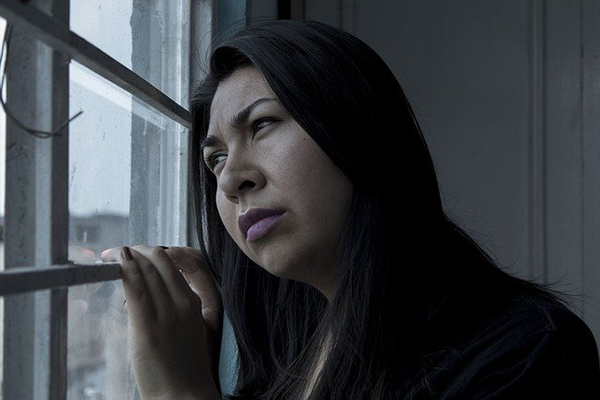IRG Health Talk presents Jay Estrada, MD on Salmonella
Dr. Jay Estrada was interviewed on IRG Health Talk radio about Salmonella.
Lacey Clinic Closes on December 14, 2018
In business and relationships, we often try new things with the best of intentions. Many of these work out, while some do not. We opened PacMed’s Lacey Clinic in 2016 to bring personalized primary and specialty care to the communities and military families in South Puget Sound.
We had trouble, however, recruiting enough qualified doctors to deliver the care our patients deserve. For this reason, we sadly closed the Lacey Clinic on December 14, 2018.
We recognize this news may come as a surprise, and are committed to fully supporting the transition of your care. Patients should have received a call and letter by mid-November, and staff will remain on hand here through December 31 to help you, at (360) 486-2800.
The following locations and providers have made appointments available and will gladly see you in their practices.
Providence Medical Group-Lacey Family Medicine (360) 486-2900
Located in the same building as PacMed Lacey
Melissa Gamble, PA-C
Family Medicine
Abraham Jeon, DO
Family Medicine
Kenneth Kooser, MD
Family Medicine
Prenatal Care
Sandra Loyer, PA-C
Family Medicine
Anna Maria A. Pletz, MD
Family Medicine
Prenatal Care
Danielle Yee, MD
Family Medicine
Prenatal Care
PacMed Puyallup (253) 435-3400
Rick Bowles, DO
Family Medicine
Marianne Broers, MD
Family Medicine
PacMed Federal Way (253) 214-1920
Marit Featherstone, ARNP
Family Medicine
Brooke Parker, DO, MBA
Family Medicine
Recipe: Sage and Pecan Stuffing
This recipe from Serious Eats is my new holiday tradition. The stuffing stays moist, provides grand flavor and best of all, keeps your vegetarian guests happy! To get the most out of this recipe, I highly recommend using the homemade stock available in the link below. It takes a bit of time but can be made in advance and adds so much to this recipe.
Keeping Holiday Stress at Bay (or under Control)
 For most of us, our lives are already busy, and with the holidays come additional burdens and stressors, from social obligations and cooking, to juggling out-of-town guests and kids on vacation. Stress drains us physically and mentally, making it that much harder to get enough sleep and maintain our exercise routines. Overeating is also common, especially when stress is combined with the many temptations of special foods and beverages. By thinking through your personal approach to stress, you can call on internal and external resources to help you enjoy the winter holiday season.
For most of us, our lives are already busy, and with the holidays come additional burdens and stressors, from social obligations and cooking, to juggling out-of-town guests and kids on vacation. Stress drains us physically and mentally, making it that much harder to get enough sleep and maintain our exercise routines. Overeating is also common, especially when stress is combined with the many temptations of special foods and beverages. By thinking through your personal approach to stress, you can call on internal and external resources to help you enjoy the winter holiday season.
Your Personal Stress Response
When you feel stressed, your body undergoes a physiological change—your “fight or flight” response has been activated. Your heart rate increases, your muscles feel tense, you feel on alert. In essence, your body is giving you extra energy so you can deal with a perceived challenge.
Take a minute to consider how you personally tend to respond to stress. If you have a sweet tooth, think ahead about how you can limit your access to sweets. If you tend to stop moving and become sedentary, can you find an exercise buddy and schedule weekly walks? Even short bursts of activity, like walking around the block or taking the stairs, can make a difference. If your weak spot is not getting enough sleep, try setting a go-to-sleep alarm on your smart phone. When it goes off, begin to ready your brain for sleep by turning from brain-busy activities to calmer ones.
Setting Expectations and Limits
Our outlook and expectations also can play a central role in how we manage the holidays. Picture this: Your neighbors are throwing a party, and they’ve asked you to bring all the appetizers. But you have gifts to wrap and want to spend time with your family baking. While you feel extremely overwhelmed and prefer to relax at home with your family, you feel a sense of obligation to please others.
In this and other stressful holiday situations, try these stress-busters:
- Think about your expectations. Be honest about what you want, and be realistic about what is possible. Then, try these two rules: Keep it simple. Don’t overcommit. Remember that you are not superman or superwoman; scale back your commitments. Don’t let “supposed to do” take the place of what you would like to do or what brings you enjoyment.
- Accept people as they are. Don’t expect others to behave as you would like them to. This is a recipe for disappointment, if not misery. Recognize that the people in your life will celebrate the holidays as they want to and not the way you want them to. So don’t try to change or control them.
- Remember, even the best-laid plans can go awry. This goes back to expectations. Expect that some problems are possible or even likely—inclement weather, delayed guests, an overcooked dinner. Try to approach unexpected challenges with an open mind, patience, creativity or a sense of humor.
- Take a few slow breaths. Deliberately slowing your breathing for a minute or two calms your body a bit so that you can pause, think more clearly and choose an effective response to the situation.
- Talk to someone. Discussing how you feel with a trusted supporter can increase your resilience. You will often find you are not the only one experiencing a particular problem.
For some people and situations, stress levels can be too high to manage alone. If you are experiencing insomnia, chronic anxiety, panic attacks, or two weeks or more of low mood or lack of interest in activities you previously enjoyed, talk with your primary care. They can refer you to a specialist to help manage your stress.
Remember, the holidays are short, as is life. Make the most of them!
Nutrition Corner: Six Ways to Stick to Healthy Eating This Holiday Season
 With forethought and a few tricks, you can stick to your health goals this holiday season! Try these six tools this year.
With forethought and a few tricks, you can stick to your health goals this holiday season! Try these six tools this year.
- Be mindful. Aim for a healthy relationship with food this year by practicing mindful eating—an exercise that builds awareness of our actions, thoughts, feelings and motivations behind eating. This practice focuses on listening to your body, acknowledging your hunger and satiety cues, and keeping tabs on how certain foods make you feel. Mindful eating can also help you create a better eating environment by slowing down at mealtimes and focusing on cherishing food. Mindfulness can remove the guilt around food intake and help you experience the joy of eating again.
- Continue your exercise routines. Maintaining your exercise routine in the midst of parties, travel and winter darkness will keep your stress down and your immune system at its best. Set realistic expectations for the holiday season. Create a new routine if it means you are more likely to stick with it. Often, success is best achieved when you include your favorite spin or yoga class in your weekly schedule—or find an activity that offers more flexibility.
- Prepare yourself with a plan. Come up with a realistic plan for parties, office treats or temptations when out shopping. Some people benefit from eating a light, healthy meal before attending a party to reduce their potential to binge on higher-calorie foods. This trick also will ensure you get your servings of fruits or vegetables beforehand, while boosting your willpower by not being hungry. When you head out shopping or to work, pack healthy snacks to avoid impulse purchases or grabbing an extra dessert from the workplace cafeteria. Some easy ideas are roasted chickpeas, apple or orange slices, or whole-grain crackers.
- Know your stressors. Take a few minutes before the holidays to write a list of your main stressors. Is it your family, the business of events, your kids during their sugar highs? Make a plan for handling these stressors to lessen the burden on your body. For example, if planning for guests is your stressor, try to delegate tasks instead of doing it all yourself or schedule some self-care activities before or after the event.
- Plan for indulgences. Let’s get real—holidays are delicious especially when all your favorite traditional foods come back, like grandma’s apple pie, uncle’s pepperoni rolls or, mm-mm, auntie’s artichoke dip. How about being a little pickier with your food choices this year? Try focusing on just your favorites while forgetting the empty-calorie or high-calorie fillers. Feel good about the foods you choose to indulge in and really savor every bite.
- Rethink your drink. Cutting out sweetened beverages is one way to stick to your health goals while still enjoying favorite traditions. Many drinks are full of calories yet have no or little nutritional benefit. In particular, alcoholic drinks not only are caloric, but also tend to loosen our decision-making skills around food intake (hello, late-night munchies). Turn to infused, sparkling or regular water as an alternative and practice moderation when drinking alcohol, which is defined as up to one drink per day for women and up to two drinks per day for men.
Sticking with these suggestions can help you to alleviate stress and enjoy a healthy holiday season with family and friends. Don’t beat yourself up over the occasional splurge. Just keep your focus and continue to set goals that keep you on track.
Stay Well: Boost Your Immune System
 Help Your Immune System Fight Winter Illness
Help Your Immune System Fight Winter Illness
Does it seem like you always get sick at this time of year? There are powerful things you can do to help you and your family avoid colds and flus. Your best bet is to avoid getting sick in the first place! Try this two-pronged approach.
Eat Smart to Boost Immunity!
The immune system is your body’s defense against infectious organisms and other invaders. Many nutrients from food specifically “feed” the immune system, thus strengthening your body’s protective response.
- Remember your cruciferous. Cruciferous vegetables—such as cabbage, Brussels sprouts, broccoli, cauliflower, bok choy—strengthen the liver so it’s better able to flush the body of harmful substances.
- Skip the sugar. Want a sweet? Reach for whole, fresh fruit! The simple sugars in cookies, soda and pastries can weaken your white blood cells’ ability to fend off foreign invaders … like viruses.
- Add some zing. Garlic and ginger have antiviral and active molecules that help the body fight off viruses and bacteria. (Worried about garlic breath? Ask your provider about high-quality garlic supplements.)
- Feed your gut. Fermented foods contain good bacteria, or probiotics, that help the digestive tract fight off foreign invaders. Try sauerkraut or kimchi (cabbage), or yogurt, kefir and sour cream (dairy).
- Talk with your doc about vitamin D. Vitamin D plays a big role in regulating your immune system. With our dark Northwest winter, your doctor may recommend a daily dose of D for you.
- Devour fish. Cold-water, fatty fish like salmon and sardines are the highest in omega-3 fatty acids, which enhance the function of certain immune cells. Fish is also a rare source of vitamin D.
Take Preventive Steps!
You can do a lot of things to help prevent you and your family from catching a cold or flu this season.
- Wash your hands: Good handwashing is the number one way to protect yourself from getting sick. Scrub for at least 20 seconds with soap.
- Get the flu vaccine: Everyone over the age of 6 months should get a flu shot. While it won’t keep you from getting a common cold, it will help protect you and others around you from the flu.
- Avoid people who are sick: Keep your distance! Sick children/adults should stay home from school/work.
- Sleep well: Your body needs good sleep for a healthy immune system. Go to bed earlier so your body can get the nightly sleep it needs: adults, 7-8 hours; teens 8-9 hours; “tweens” 9-10 hours; young school-age kids 10-12 hours; toddlers/preschoolers, 11-13 hours.
- Eat well: Maintain a well-balanced diet of healthy protein, whole grains, healthy fat like olive oil and avocado, limit added sugar, and eat plenty of fruits and vegetables. Read more below!
Eat well, sleep well and be well this winter!
Are you looking for a primary care provider? PacMed offers preventive, primary care through our Family Medicine and Internal Medicine teams. Therapists in our Behavioral Medicine department are also available for counseling.
Find and Treat Diabetes Early
 Best Tactic for Diabetes? Find and Treat It Early
Best Tactic for Diabetes? Find and Treat It Early
Over 30 million Americans have diabetes, but 7 million of those people are not yet diagnosed!* Are you one of them? Getting tested is a smart step for your long-term health.
Diabetes is a life-altering disease, and it’s important to catch it early. The earlier you detect diabetes, the better your chances of avoiding future health problems, including heart attack, kidney disease, limb amputation and blindness.
With diabetes, there is too much glucose (sugar) in the blood. This occurs when a person’s body is unable to produce or use insulin, a hormone that regulates blood sugar levels in our bodies. There are two types of diabetes:
- Type 1 diabetes is typically diagnosed in children and young adults. It occurs when the pancreas produces little to no insulin. Type 1 can be managed with daily insulin injections.
- Type 2 diabetes accounts for 90 percent of cases. It occurs when your body resists the effects of insulin or doesn’t produce enough.
If left untreated, either form of diabetes can increase the risk of serious health complications.
Learn Your Risk Factors and Get Screened
Risk factors for type 2 diabetes include a family history of diabetes, age 45+, being overweight, infrequent/irregular physical activity and certain races/ethnicities (including Pacific Islander, Asian-American, Mexican-American and African-American). Also, women who had diabetes during pregnancy are at higher risk.
If you have one or more risk factors for diabetes or notice any of the above symptoms, talk with your doctor about being screened as soon as possible. If you receive a diabetes diagnosis, you are not alone. Ask your doctor about diabetes education and nutrition support.
Think of Exercise as Diabetes “Medicine”
It’s important to make physical activity a part of your life. If you don’t have diabetes, regular exercise can help prevent the disease. If you do have diabetes and you exercise regularly, it can lower your blood pressure and blood sugars—and can even prevent the need for diabetes medication for a long period of time.
You don’t need to run a marathon to reap the benefits of exercise! Walking between 6,000 and 10,000 steps daily is an attainable goal for most people. Use a step counter—or simply count your steps for 5 minutes and do some math. If you have mobility problems, water aerobics is a great alternative. Whatever you do, aim for 150 minutes of exercise per week, or 20-30 minutes every day.
If you are looking for a primary care provider, we invite you to meet the PacMed Primary Care team. If you are already living with diabetes or have recently been diagnosed, the PacMed Diabetes Management Program offers comprehensive medical care, health education and support.
*Statistics as reported in the 2017 National Diabetes Statistics Report by the Centers for Disease Control (CDC).
How strong are your bones?
 We frequently hear talk of osteoporosis, but do you know what it is—or if you have it? Osteoporosis literally means “porous bones.” It is a disease in which bone tissue and mass deteriorate, leading to frailty and a susceptibility to fractures.
We frequently hear talk of osteoporosis, but do you know what it is—or if you have it? Osteoporosis literally means “porous bones.” It is a disease in which bone tissue and mass deteriorate, leading to frailty and a susceptibility to fractures.
“The kicker,” says Dr. Mary Wemple, a rheumatologist at Pacific Medical Centers, “is that this bone-loss condition occurs without symptoms. That’s why screening is so critical.” Because bones weaken gradually, people may not know that they have osteoporosis until a sudden strain, bump, or fall causes a fracture. In some serious cases, even a sneeze can cause a rib to break. Hip and spinal fractures can be significant, possibly leading to a hospitalization or surgery, a reduced ability to walk unassisted, or further injuries and decline. “Though osteoporosis cannot be cured, it can be effectively treated,” Dr. Wemple stresses. “And it’s important to note that it can be prevented.”
Who Gets Osteoporosis?
Of the 10 million people who have osteoporosis, 80 percent are women. Older women are particularly susceptible. Women can lose as much as 20 percent of their bone mass in the five to seven years following menopause. If you are a woman over age 65, screening is highly recommended. If you are younger than 65, but have risk factors for osteoporosis, you may benefit from screening.
While osteoporosis is more common in women, it certainly can affect men as well. Men who are over 70 years old should discuss bone density screening with their primary care doctor. Men younger than 70 may benefit from screening if they have risk factors for osteoporosis.
Bone Density Screening
One method of screening that your primary care physician might suggest is a bone density test or scan. A bone density scan is a quick, painless procedure using an enhanced, low-radiation form of X-ray technology called DXA (pronounced “dexa”). DXA, which stands for dual-energy X-ray absorptiometry, is the most-often used method to diagnose bone loss. The DXA test can also assess your risk for developing fractures.
If your bone density is found to be low, you and your physician can work together on a treatment plan, which might include medication, to help prevent fractures before they occur. Future DXA scans can track the effects of your treatment.
Pacific Medical Centers, where Dr. Wemple works, has three locations where you can receive a DXA scan: Canyon Park, First Hill and Beacon Hill. Prior to scheduling your DXA scan, please contact your insurance company to determine if you need a referral from your primary care provider. Many insurance companies do allow patients to get a DXA scan without a referral.
Preventive Measures
The National Osteoporosis Foundation recommends the following five steps to optimize bone health and help prevent osteoporosis:
- Get the daily recommended amounts of calcium and vitamin D
- Engage in regular weight-bearing and muscle-strengthening exercise
- Avoid smoking and excessive alcohol
- Talk to your healthcare provider about bone health
- Have a bone density test and take medication when appropriate
- Consult your physician for advice regarding appropriate dose of calcium and vitamin D and the right exercise program for you.
Dr. Gingrich interviewed on KIRO Radio about sports injuries
IRG’s Injury Update speaks with Dr. Gingrich who specializes in sports medicine at the Pacific Medical Centers. Dr. Gingrich sees patients for all types of athletic injures, and we recommend to see him if you have an athlete that needs to be seen ASAP.
Combating cancer

PacMed provider answers questions related to breast health and cancer prevention
Breast cancer is an ever-present and unfortunate reality in America. One in eight women are diagnosed with the disease in their lifetime, and it is the second leading cancer-causing death among women in the United States, according to the National Breast Cancer Foundation. With staggering statistics across the board and so many people impacted by its very existence, the reasons to be vigilant about breast health are numerous. In honor of Breast Cancer Awareness Month, Pacific Medical Centers’ Hematologist and Medical Oncologist Atis Barzdins, MD, explains how this sickness affects not only the women diagnosed, but their loved ones, survivors, and men as well.
What biological and environmental factors play a role in developing breast cancer?
The most significant predictors of breast cancer risk are genetic factors, reflected by personal and family cancer history. The risk is significantly higher if breast cancer was previously diagnosed in a person’s first or second-degree relatives before the age of 45, and/or if more than one relative has been affected. Also, the presence of other cancers, especially ovarian cancer, can be associated with hereditary cancer syndromes that also may carry significant breast cancer risk.
While breast cancer is common all around the world, the incidence rates are the highest in the developed Western countries (North America, Europe, Australia and New Zealand) and lowest in Asia and sub-Saharan Africa.
The factors known to be associated with higher risk, which are more prevalent in the industrialized world, include: increased fat intake and weight gain after menopause, earlier start of menstruation, working night shifts, using alcohol, hormone replacement therapy during menopause, having fewer pregnancies, less breastfeeding or a later age at first birth. (In other words, having a baby before the age of 30 is protective).
What routines and exams should women receive on a regular basis to monitor breast health? What day-to-day habits should people adopt to do the same?
Breast cancer screening needs to be tailored in discussion with a doctor, according to a person’s risk factors, specifically family history. Genetic testing for hereditary cancer syndromes may be warranted if there is a strong family cancer history. High-risk patients, such as those with BRCA gene mutations, may need to start screening as early as age 25, and the screening strategy may entail breast MRI and breast exams by a healthcare specialist.
For average-risk women, the American Cancer Society (ACS) recommends the following:
- Women between ages 40-44 have the option to start screening with a mammogram every year
- Women ages 45-54 should get mammograms every year
- Women 55 and older can switch to a mammogram every two years, or they can choose to continue yearly mammograms. Screening should continue as long as a woman is in good health and expected to live 10 more years or longer.
Research has not shown a clear benefit to regular breast self-exams. Most often when breast cancer is detected because of symptoms (such as a lump), a woman discovers the symptom during usual activities such as bathing or dressing. ACS recommends women be familiar with how their breasts normally look and feel and report any changes to a healthcare provider right away.
Do you have any suggestions for individuals who are in remission? What can they do to decrease their odds of recurrence?
Many breast cancer patients are recommended further treatments after breast cancer surgery, even when all the known cancer has been successfully removed. These “adjuvant treatments” help to decrease the risk of cancer recurrence and are prescribed by oncologists based on individualized risk assessment and features of the cancer. Because we cannot often be certain that some cancer cells haven’t escaped the surgical treatment, adjuvant treatments are very important for many patients, as they are geared towards reducing the risk of developing metastatic disease, which is cancer that has spread to distant organs.
Today, there is generally no cure for metastatic breast cancer, although the treatments for patients who cannot be completely cured have significantly improved, and many women live for many years, even decades.
Healthy lifestyle choices, especially physical activity, diet and weight control, and minimization of alcohol intake have been linked to improved cancer outcomes, particularly in survivors of breast cancer. Lifestyle modification can be an empowering and effective way to boost physical and mental health in breast cancer survivors.
Although breast cancer primarily affects women, it is also possible for men to be diagnosed. What advice or precautions do you have for men in this regard?
In the United States, between 0.5-1 percent of breast cancer cases are diagnosed in men. As with women, the risk of breast cancer in men increases with age. Men tend to be five to 10 years older than women at the time of diagnosis.
The typical first symptom of breast cancer in men is a firm, painless mass, usually next to or underneath one of the nipples. This always requires immediate attention and evaluation.
Is there anything else you would like to share regarding breast health?
About one in eight U.S. women will develop invasive breast cancer. However, due to great medical advances, around 80 percent of the women diagnosed with breast cancer in the United States will survive it. When breast cancer is found in the early stages and treatment is initiated promptly, the chances for a positive outcome are improved. Over time, treatments have become less invasive and are tailored more accurately to the individual risk. This allows most women today to avoid mastectomy and chemotherapy. Because early detection is so critical, I encourage all women to address their breast cancer risk with a sense of importance and without fear.
Dr. Atis Barzdens is an oncologist at PacMed.










